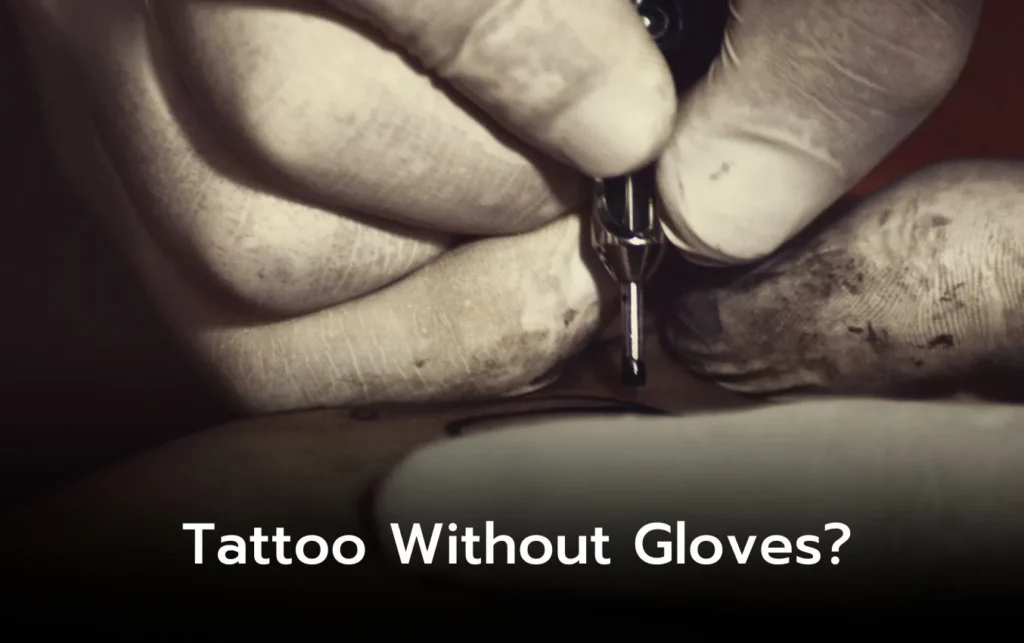As you prepare to get inked, you might wonder what’s going on behind the scenes to ensure your safety and the artist’s. One crucial aspect of the tattooing process is the use of gloves. But what happens if you tattoo without gloves? The risks are real, and the consequences can be severe. Without gloves, you and your artist are exposed to bloodborne pathogens, bacterial transfer, and cross-contamination. The skin is punctured repeatedly during tattooing, making it a breeding ground for infections. Gloves act as a barrier, protecting both parties from potential infections and contaminants. In this article, we’ll examine the importance of gloves in tattooing and what can happen if they’re not worn.
Table of Contents
- What happens if you tattoo without gloves
- Increased Bloodborne Infections
- Higher Bacterial Transfer
- Reduced Effectiveness of Gloves
- The Consequences of Not Wearing Gloves
- Increased Risk of Infection
- Cross-Contamination
- Allergic Reactions and Skin Irritation
- Professional Standards and Regulations
- Compromised Quality of Work
- The Importance of Gloves
- Protection for Both Parties
- Ensuring a Safer Environment
- The Best Choice for Tattoo Artists: Nitrile Gloves
- Advantages over Latex and Vinyl Gloves
- Why Nitrile Gloves are Preferred
- What Color is Best?
- Best Black Disposable Nitrile Gloves for Tattooing
What happens if you tattoo without gloves
For tattoo artists, not wearing gloves can lead to a multitude of risks that can compromise their own health and safety, as well as that of their clients.
As you examine into the world of tattooing, it’s necessary to understand the potential dangers that come with not wearing gloves. From increased bloodborne infections to reduced effectiveness of gloves, we’ll explore the risks associated with tattooing without gloves.
Increased Bloodborne Infections
Infections such as Hepatitis B, C, and HIV can be transmitted through contact with contaminated blood and bodily fluids. Without gloves, the risk of percutaneous exposure (needle sticks, etc.) increases, putting both the artist and client at risk.
Higher Bacterial Transfer
To make matters worse, bacteria like E. coli are more easily transferred from contaminated surfaces to bare skin compared to gloved hands. This increases the risk of bacterial contamination, which can lead to serious health issues.
Understanding the significance of bacterial transfer is crucial in a tattoo setting. Without gloves, the risk of cross-contamination increases, putting both parties at risk of infection.
Reduced Effectiveness of Gloves
On the surface, it may seem that wearing gloves is enough to prevent infections. However, poorly fitting gloves can lead to more surface area exposed, potentially increasing microbial accumulation (though still less than bare skin).
Increased exposure to bodily fluids and sharp objects can compromise the effectiveness of gloves. It’s necessary to choose the right type of gloves, such as medical-grade nitrile or latex, to ensure maximum protection.
By understanding these risks, you can appreciate the importance of wearing gloves in a tattoo setting. In the next section, we’ll explore the consequences of not wearing gloves and why it’s crucial to prioritize health and safety in the world of tattooing.
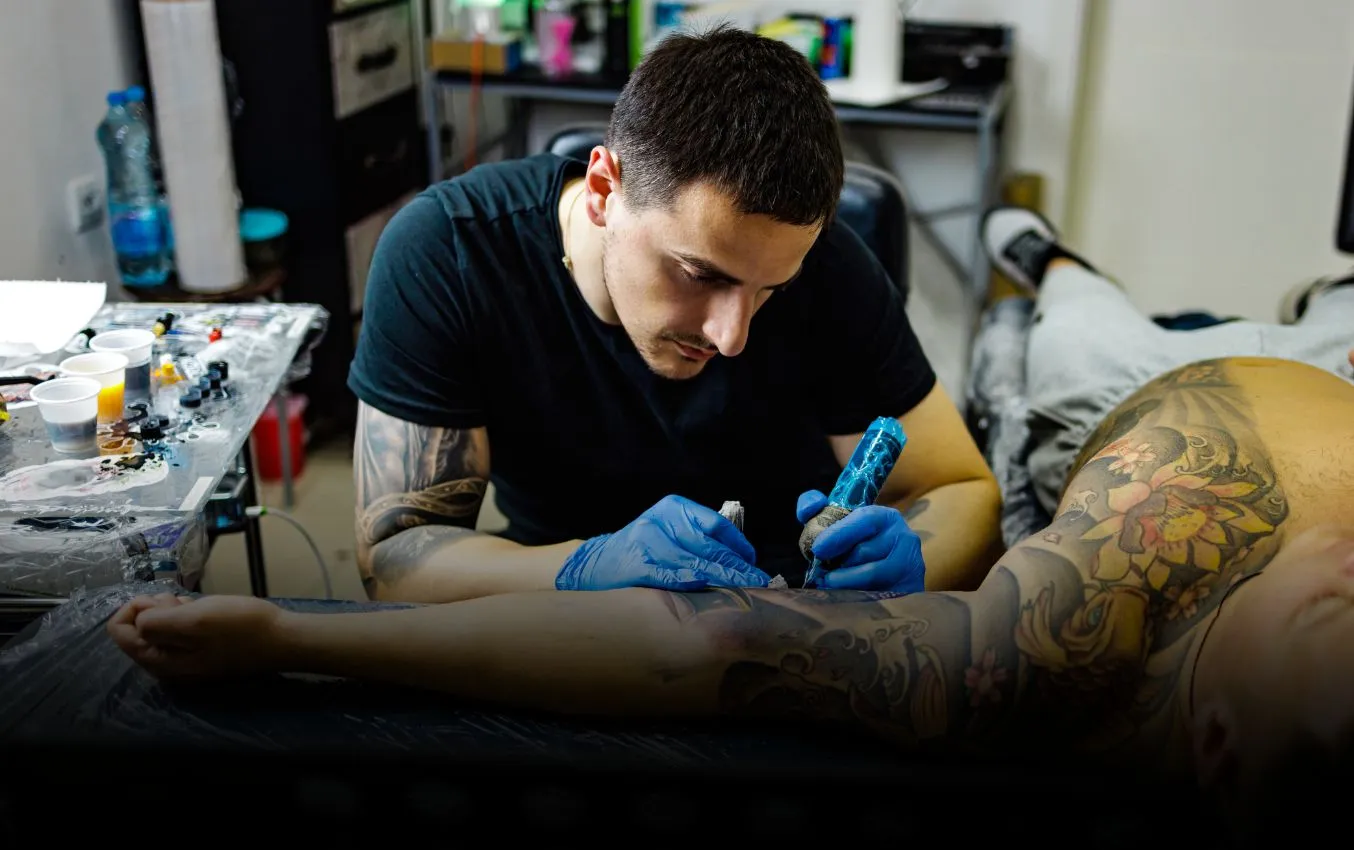
The Consequences of Not Wearing Gloves
While tattooing without gloves may seem like a minor oversight, it can have serious consequences for both the tattoo artist and the client.
Increased Risk of Infection
Consequences of not wearing gloves include a higher risk of infection transmission. The skin is punctured repeatedly during tattooing, which can expose both the client and the artist to bloodborne pathogens. Pathogens such as hepatitis B, hepatitis C, and HIV can be transmitted through contact with infected blood.
Cross-Contamination
For tattoo artists, not wearing gloves means their hands can spread contaminants between clients or to themselves. Bacteria and viruses present on the skin or in the blood can be transferred. Gloves help prevent this type of cross-contamination.
Understanding the risks of cross-contamination is crucial in a tattoo shop. Without gloves, the artist’s hands can easily spread bacteria and viruses, putting both themselves and their clients at risk of infection.
Allergic Reactions and Skin Irritation
On top of the risk of infection, not wearing gloves also increases the risk of allergic reactions and skin irritation. Tattoo inks and materials may cause allergic reactions or skin irritation. Gloves act as a barrier, protecting the artist’s hands from these substances.
Allergic reactions can range from mild to severe, and in some cases, can be life-threatening. By wearing gloves, tattoo artists can protect themselves from potential allergic reactions and skin irritation.
Professional Standards and Regulations
For professional tattoo artists, not wearing gloves is a serious breach of protocol. Professional tattoo artists follow strict hygiene protocols, including wearing gloves. Not wearing gloves may violate health codes and is considered unprofessional.
Reactions to not following proper hygiene protocols can be severe, including fines, penalties, and even the loss of licenses. It is necessary for tattoo artists to adhere to professional standards and regulations to ensure a safe and healthy environment for their clients.
Compromised Quality of Work
Allergic to the idea of compromising on quality, tattoo artists rely on gloves to provide a better grip on tattoo equipment, enhancing precision and stability. Without gloves, the artist’s hands may slip, affecting the quality of the tattoo.
Compromised quality of work can lead to dissatisfied clients, damaged reputations, and even legal issues. By wearing gloves, tattoo artists can ensure a high level of quality in their work, protecting their reputation and their clients’ satisfaction.
The Importance of Gloves
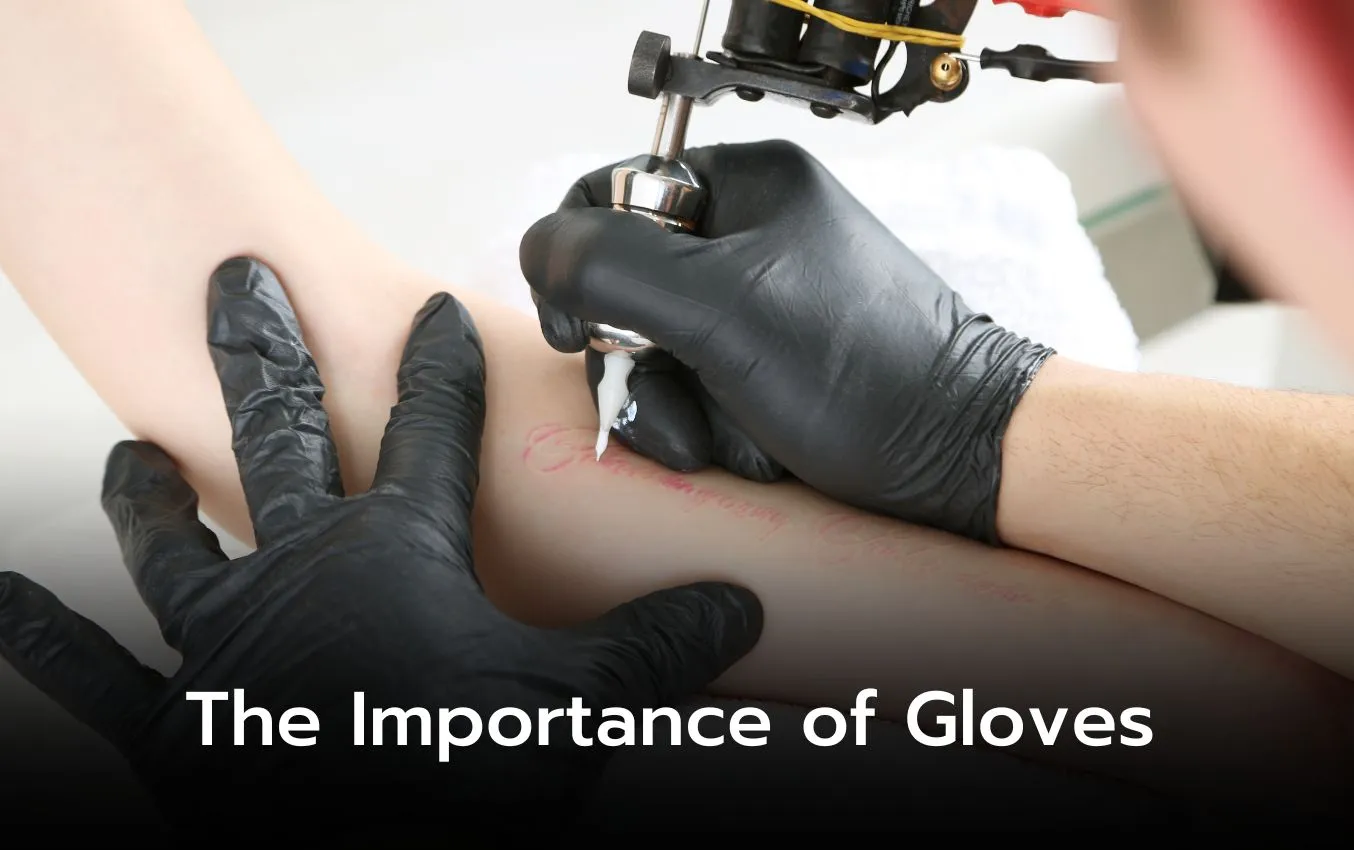
All tattoo artists understand the significance of wearing gloves during the tattooing process. Gloves are a necessary component of the tattoo artist’s toolkit, providing a barrier between the artist’s hands and the client’s skin.
Protection for Both Parties
Importantly, gloves protect both the client and the artist from potential infections and contaminants. They ensure a safer environment for the tattoo process, reducing the risk of cross-contamination and bloodborne pathogens.
Ensuring a Safer Environment
On a fundamental level, gloves help to prevent the spread of bacteria, viruses, and other microorganisms that can cause infections. By wearing gloves, tattoo artists can minimize the risk of transmitting diseases and ensure a safer environment for both themselves and their clients.
Ensuring a safer environment also means following strict hygiene protocols, including sterilizing equipment, washing hands, and using disposable needles and ink caps. Gloves are just one part of a comprehensive approach to maintaining a clean and safe tattoo shop.
The Best Choice for Tattoo Artists: Nitrile Gloves
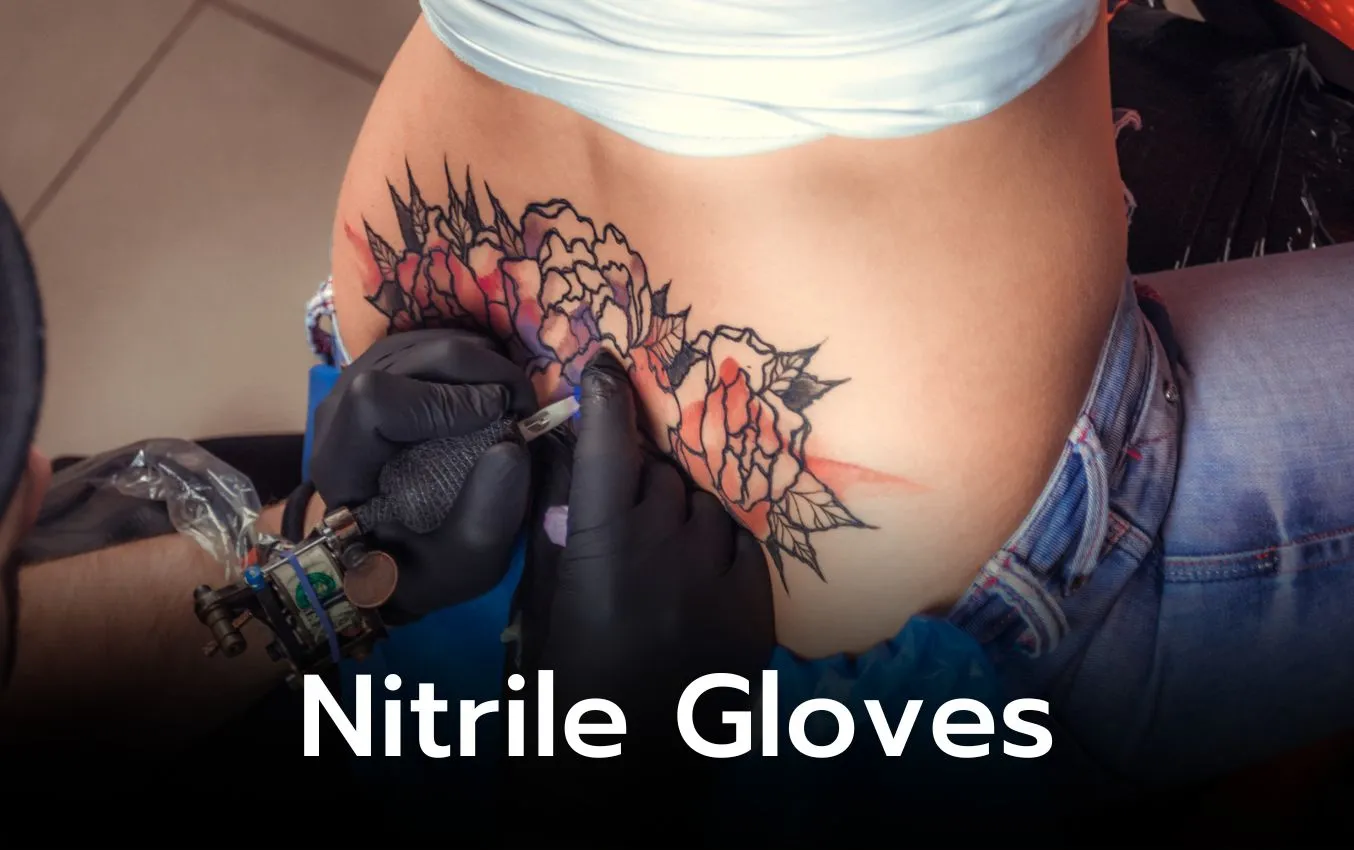
Despite the availability of latex and vinyl gloves, nitrile gloves have emerged as the preferred choice for tattoo artists. This is due to their unique combination of durability, comfort, and protection.
Advantages over Latex and Vinyl Gloves
For tattoo artists, nitrile gloves offer several key advantages over latex and vinyl gloves. They are more comfortable and durable than latex, yet thinner and more flexible than vinyl, allowing for better dexterity and precision during tattooing.
Why Nitrile Gloves are Preferred
An increasing number of tattoo artists are opting for nitrile gloves due to their exceptional performance and protection. Nitrile gloves are stronger and more puncture-resistant than latex or vinyl gloves, providing better protection against needles and other sharp objects.
Nitrile gloves are also latex-free, making them a good option for artists or clients with latex allergies. Additionally, the black color helps hide ink stains and makes it easier to spot any tears or holes in the glove. Overall, nitrile gloves offer the perfect blend of comfort, dexterity, and protection for tattoo artists.
What Color is Best?
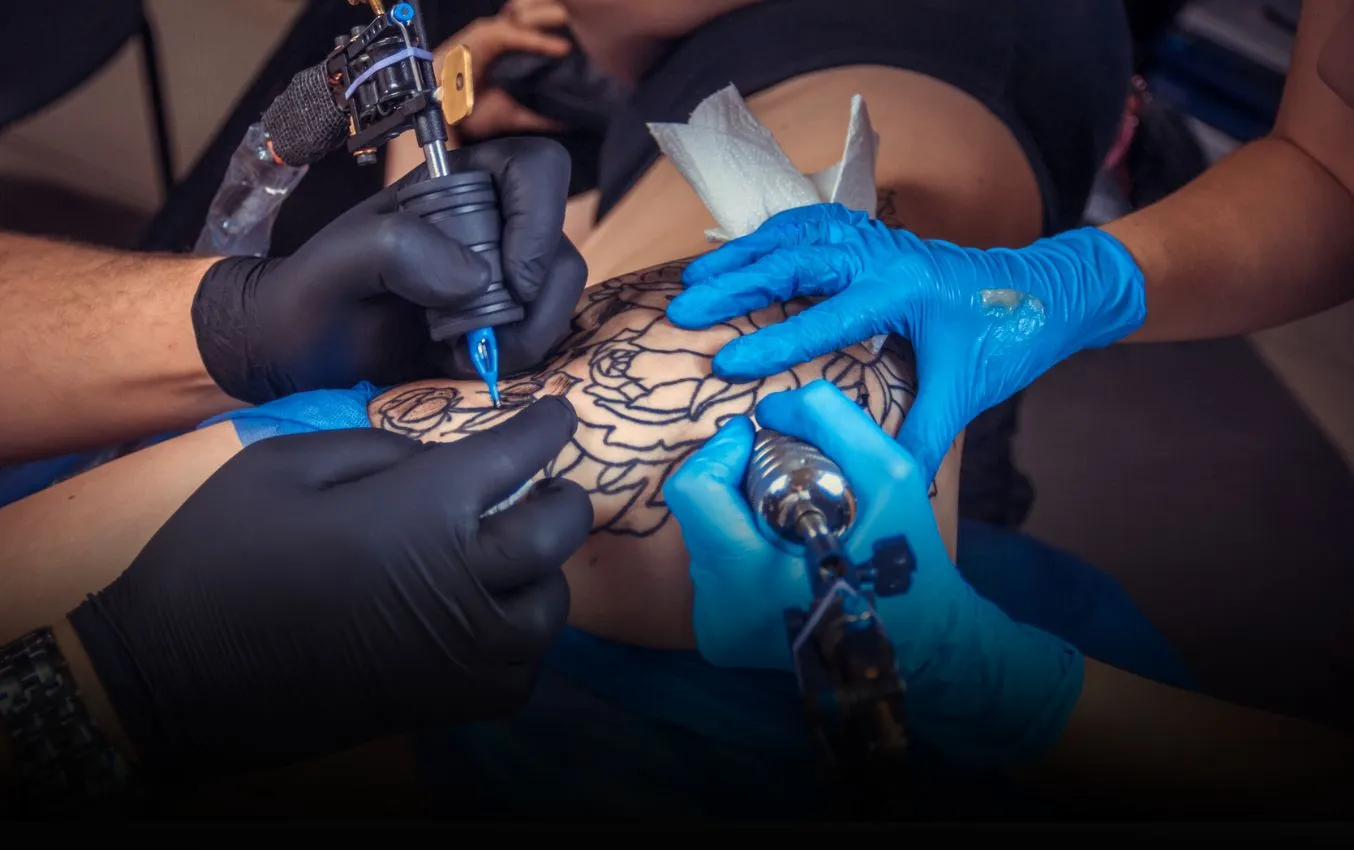
While there is no difference in quality between colors of nitrile gloves, black nitrile gloves are the most popular choice for tattoo shops. This is because the black color disguises the ink that inevitably gets on the gloved hand, making it less distracting for the artist.
Over time, black gloves have become synonymous with tattoo artists, and for good reason. They camouflage any blood that the tattooing process may produce, making it less likely to disturb the client. Furthermore, for artists with light to medium skin tones, black nitrile gloves make it easier to see when there has been a rip or puncture in the disposable glove.
Best Black Disposable Nitrile Gloves for Tattooing
[tpgb-reusable id=”2190″]
With these considerations, it’s clear that tattooing without gloves is a risky endeavor that can have serious consequences for both the artist and the client. From increased bloodborne infections to compromised quality of work, the importance of wearing gloves cannot be overstated. As a responsible and professional tattoo artist, it’s crucial to prioritize safety and hygiene by wearing high-quality, medical-grade gloves like black nitrile gloves. By doing so, you’ll not only protect yourself and your clients but also ensure a safer and more successful tattooing experience.
